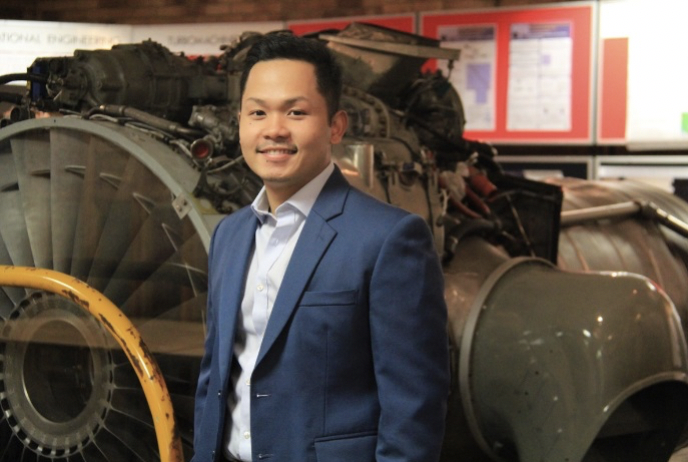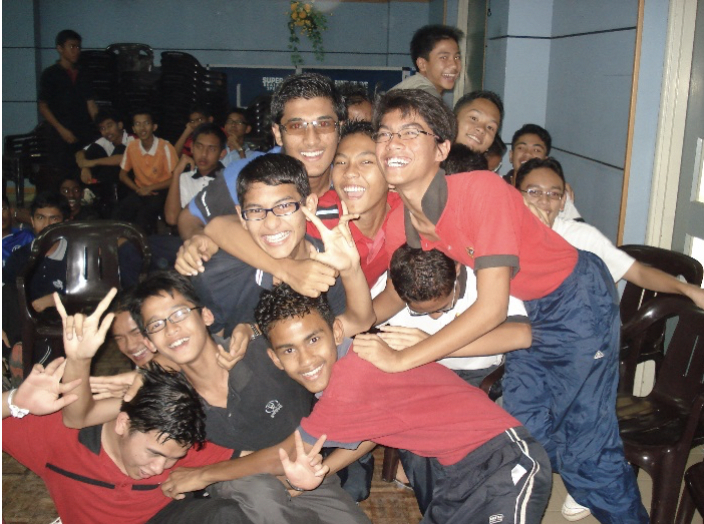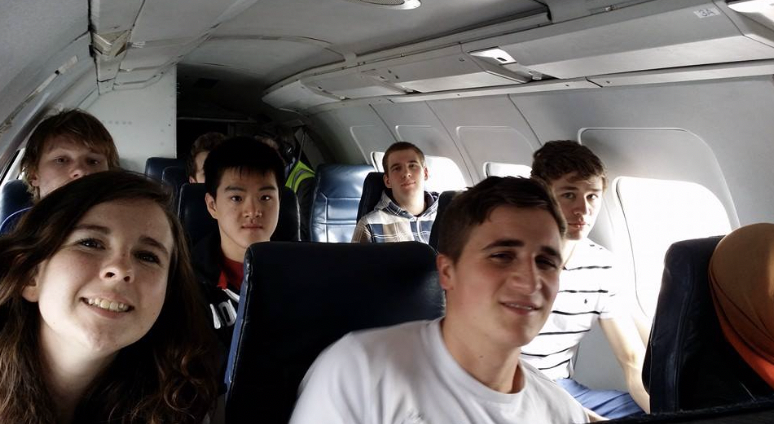From Malaysia to Cranfield, to Washington D.C. – Part 1.
11/11/2019

Ten years ago, I would not have expected to be here.
I am a PhD student here at Cranfield University working on the Cranfield’s bioCubeSat programme named BAMMsat (small satellite with biological experiments). I am writing this article to share my experience in the 2019 Emerging Space Leaders programme. Eleven years ago, my family moved to the UK to follow my mother pursuing her PhD studies. I would have never expected to be in her shoes, pursuing a PhD of my own. It never came across my mind after seeing the hardship that she went through and now, here I am on a British Airways plane crossing the Pacific Ocean to attend the 70th International Astronautical Congress (IAC) in Washington D.C., the capital of the United States.
IAC is the biggest space conference in the world, and this year it corresponds with the 50th anniversary of the moon landing. The conference gathers space experts, leaders, thinkers, and the next generation discussing and debating the next steps in the space industry. This year, we will all meet not just to discuss our future but also celebrating the triumph of our past. I have been lucky to have been selected by the International Astronautical Federation as one of the grantees for their Emerging Space Leader programme enabling me to take part in the conference, attending the United Nations’ workshop, and meeting the leaders in the space industry.
Throughout this article, I would like to share my journey from Malaysia to Cranfield, to Washington.

When I was 16 years old, running around without a care in the world, I have always been intrigued by our desire to reach the solar system. I grew up in the age of Space Shuttles, International Space Station (ISS), and Pluto not being a planet anymore. My youngest brother was born knowing that we have a base in the Low Earth Orbit with astronaut inside the ISS. To think that eight decades ago, breaking the sound barrier was considered impossible. My curiosity made me pursue the field of science and technology in a rural boarding school in Malaysia. One day, on another average day in school, I received a call from my mother telling me that we are moving to the UK. I felt excited yet scared, grasping the idea of moving to another country.
Being an immigrant family of seven, trying to start a new life in the UK was not easy for us. My parents had to leave everything behind, i.e. their careers, their funds, and their friends and family in the name of education. It was a cold January morning when we arrived in the UK, and it was very strange to be in a cold place compared to the hot and humid Malaysia. When we arrived in the Southend-on-Sea, a city on the south-east of England, the first thing we had to do is sign up to school. This was a challenging time for us, when we moved I was 16 years old. It meant that the students in the UK had just completed their GCSE examination, while I have moved just before the equivalent examination take place in Malaysia, meaning I was not able to continue to A level. After a few months waiting, I even contemplated suspending my studies to pursue a job career. It took some convincing, and my mum’s heartfelt letter to the headmaster before I was accepted to join the sixth form at Cecil Jones College.
I still remembered it to this date, the first day at Cecil, was one of the most horrendous days in my life. With broken English, a strong accent and the different culture, I struggled to assimilate with my fellow students. Struggle remained the theme for the next three years of my life. During this period, I failed my A level twice, and it was heartbreaking knowing that no university will accept me to study engineering with my results. I did well in financial studies, and I have been advised to pursue further studies or a career in finance, at this time I was also working part-time with the Lloyds Bank Plc. It made complete sense for me to have a career in finance; however, I knew that my passion is in engineering and I refused even to consider the idea of working in finance. It took a lot of grit and cover letters to various universities before I got a reply from University of Liverpool saying that they might accept me for a Bachelor of Engineering (BEng) in Aerospace Engineering if I completed the university’s foundation course. With the encouragement and financial support of my parent (which I am forever grateful) I signed up to the course and managed to complete it. The following year I was enrolled in BEng in Aerospace Engineering at the University of Liverpool.

It was at the University of Liverpool, where I encountered Cranfield University. In our flight dynamics course, we had to take part in a two-day flight test course with the National Flying Laboratory Centre University. It was the first time I met our beloved Jetstream 31 (which is due to be replaced with Saab 340b aircraft). It was a great day, and I learned a lot about fight dynamics from physically experiencing the phugoid mode and the Dutch roll manoeuvre. More importantly, this was when I first learned about Cranfield University. Towards the end of my bachelor, I took Spaceflight as an optional module. It rekindled my passion for space, and I knew I wanted to be in the space industry. Being in the UK, I had a better chance of taking part in the industry compared to back at home since the space industry does not exist back home.
I knew that to step foot in the space industry; I need to further my understanding of the industry. It meant that I had to enrol in a postgraduate MSc in the space-related fields. I have heard about Cranfield and its reputation in the aerospace. I went on the Cranfield website, and that was when I came across the MSc Astronautics and Space Engineering. It the perfect course that balances the various field of astronautics, and more importantly teach its students Systems Engineering. An interdisciplinary field on engineering management and engineering that focuses on how to design and manage complex systems over their life cycle — an important field for a space project where mission success is critical. With a successful application, I had to take out a financial loan to pay for the course. It was a significant financial investment paying at the international fee rate (again, I would like to extend my gratitude to my parents for supporting my decision). However, it was one of the most rewarding and intense experiences in my life and one that have defined me as a person and impacted my life greatly.
To be continued…part two on PhD at Cranfield and the conference in Washington.
Categories & Tags:
Leave a comment on this post:
You might also like…
Preparing your work for Turnitin submission
Before submitting your work into Turnitin for similarity checking, if you have used referencing software then you may need to take some important steps first. Mendeley and Zotero integrate with MS Word by embedding field ...
The fast track to supercar engineering: My Cranfield journey
It’s been a dream come true to work on some of the world’s most prestigious supercars – the Aston Martin Valhalla, McLaren 750 & Artura, the GMA T.33. But every successful ...
Automotive Engineering: From student to hypercar innovation at Rimac
We sat down with recent graduate Thomas Perrin, to discuss how his year on the MSc in Automotive Engineering at Cranfield University propelled him from the lecture hall directly into the ...
What this year at Cranfield really meant to me
Every Cranfield journey is unique. In this alumni reflection, Zachea Scicluna shares what her year at Cranfield truly meant, from facing uncertainty to gaining hands-on experience in industry-backed projects. I’ve been reflecting (and delaying) ...
Preparing for assignments and exams?
Sorry! We know it seems a bit mean to mention the exams in January rather than looking forward to the break before it! However, we know many of you will be thinking about your forthcoming ...
Screening for FTSE 100 companies on Bloomberg
So you’re researching an index and need some data on its constituent companies? Bloomberg’s Equity Screening tool makes light work of this, not just for the FTSE, but for indices, exchanges and sectors worldwide. Type EQS ...






